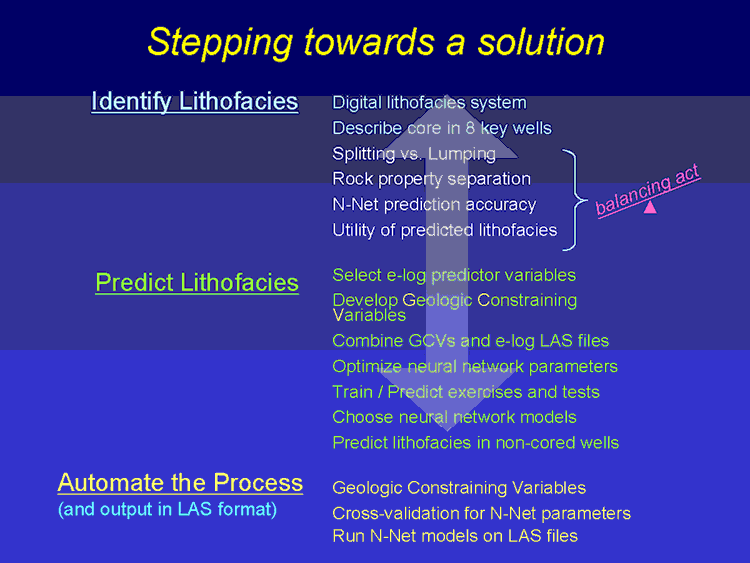 |
|
Kansas Geological Survey Open-file Report 2003-68 |

The exercise of identifying lithofacies in cores and predicting
lithofacies in non-cored wells is a grueling iterative process. A digital
lithofacies description system was used that allowed for quick changes in
lumping and splitting of lithofacies classes. Lithofacies are a continuum
in both texture and rock properties. The key is to split the continuum in
a manner that optimizes prediction accuracy as well as usefulness. Near 100%
accuracy in prediction could be attained if we had lumped too much (e.g.:
two lithofacies, Nonmarine silts and Marine carbonates) but the lithofacies
model would be useless, or, we could split the continuum into twenty lithofacies
and have low prediction accuracy rates, also not acceptable. Eight lithofacies
appears optimal.
Steps in lithofacies prediction in non-cored wells are below:
- Select electric log (e-log) predictor variable curves (gamma ray-GR, photo electric effect-PE, neutron porosity-Nphi, density porosity-Dphi, and apparent true resistivity-Rta).
- Develop geologic constraining variables (GCV’s).
- Combine GCVs and e-log log ascii standard (LAS) files.
- Optimize neural network parameters.
- Run training and prediction exercises and tests, where the neural network is trained on the core-defined lithofacies and predictions made on withheld data.
- Choose neural network models.
- Predict lithofacies in non-cored wells using the selected neural network models.
Steps in the process were automated for batch-processing efficiency on the following:
- Geologic Constraining Variables (GCV’s)
- Cross-validation for neural network parameters
- Running neural network models on LAS files
Outputs of GCV’s and neural network lithofacies predictions were output in LAS file format.
e-mail : webadmin@kgs.ku.edu
Last updated January 2004
http://www.kgs.ku.edu/PRS/publication/2003/ofr2003-68/slide6.html